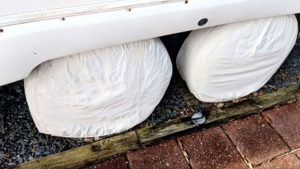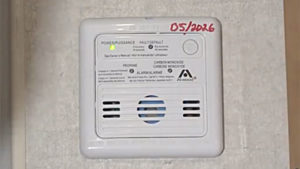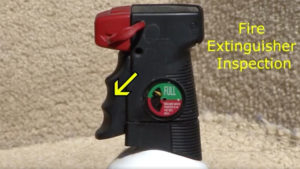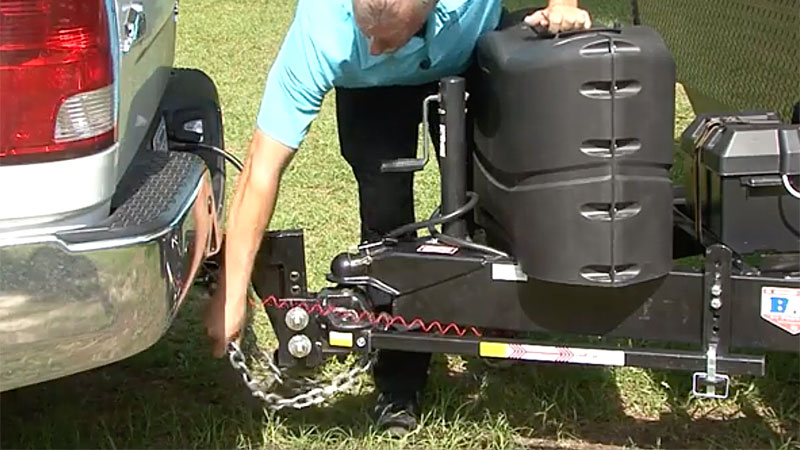rv Education 101
RV Education 101 - Top Seven RV Safety Checks
Hi. I’m Mark Polk with RV Education 101. Today I want to talk about my top seven RV safety checks you should make before each RV trip, but let’s start by asking ‘is our RV safe in general.’
When an RV is manufactured, it will have an oval shaped RVIA seal displayed on the exterior next to the entrance door. This seal means the RV manufacturer complies with more than 500 safety requirements regarding electrical, plumbing, heating and fire, and life safety. These safety requirements are established under the American National Standards Institute Standard for Recreation Vehicles. This should put to rest any concerns you have about the RV itself being safe when it is manufactured.
Now let’s go over my top seven safety checks to make prior to leaving on an RV trip. For starters it’s important you educate yourself on all the systems, appliances, and safety features on an RV and how to use the RV safely and effectively. There are probably 20 RV safety items we could discuss, but these are in no order the ones I feel should be checked prior to hitting the road.
 Number one, always complete a pre-trip checklist before you head out on the road. Simple tasks like checking your tires, lights, fluid levels, pitch setup, all contribute to a safer RV trip. You should make these checks every day before traveling in your RV. I find it easier if you have these checks in the form of a checklist so nothing is overlooked or forgotten.
Number one, always complete a pre-trip checklist before you head out on the road. Simple tasks like checking your tires, lights, fluid levels, pitch setup, all contribute to a safer RV trip. You should make these checks every day before traveling in your RV. I find it easier if you have these checks in the form of a checklist so nothing is overlooked or forgotten.
Number two, take care of your RV’s tires, and they will take care of you. When you are not using your RV, keep the tires covered to protect them from the damaging effects of ozone in the air and UV rays from the sun. Invest in a quality tire inflation pressure gauge and check the tire pressure in all tires every time you use the RV. Check and adjust the pressure when the tires are cold before moving the RV. Maintain the pressure recommended by the manufacturer based on weights. Consult your owner’s manual for proper tire inflation and never exceed the maximum pressure located on the tire sidewalls.
Number three, LP gas leak detector. I recommend you familiarize yourself with the odor and add it to LP gas to assist you in detecting a leak. The next time you go to have the LP gas cylinders or LP tank refilled, ask the attendant to let you smell the gas. Test the LP gas leak detector for proper operation. Check the expiration date on the detector and replace it when it expires. I write the expiration date on the cover as a quick reminder. It is not recommended you travel with the LP gas turned on. If you do have the gas on while traveling, turn off each individual pilot light appliance and the main gas supply before refueling.
Number four, the carbon monoxide detector. Carbon monoxide is called the silent killer because you cannot see it, smell it, or taste it. Test the carbon monoxide detector for proper operation every time you use the RV. Check the expiration date of the CO detector and replace it when it expires. Again, I write the expiration date on the cover as a quick reminder. Know what the symptoms of carbon monoxide poisoning are: dizziness, vomiting, nausea, muscular twitching, intense headache, throbbing in the temples, weakness and sleepiness, inability to think coherently. If you or anyone else experiences any of these symptoms, get to fresh air immediately. If the symptoms persist, seek medical attention immediately. If you were running the generator, shut it down, and do not operate it again until it is inspected and repaired by a professional.
 Number five, smoke alarm. In less than 30 seconds, a small flame can turn into a major fire, and within a minute, the RV can be filled completely with smoke. RVs come equipped with a smoke detector. Test the smoke detector for proper operation. Instruct everybody in the RV on what your emergency escape plan is in the event of a fire.
Number five, smoke alarm. In less than 30 seconds, a small flame can turn into a major fire, and within a minute, the RV can be filled completely with smoke. RVs come equipped with a smoke detector. Test the smoke detector for proper operation. Instruct everybody in the RV on what your emergency escape plan is in the event of a fire.
RV 101 tip; if you hear a chirping noise coming from any detector, the battery is dying and needs to be replaced. If you remove dry cell batteries during storage, replace them with new batteries the following spring.
 Number six, fire extinguishers. New RVs are required to have a fire extinguisher near the entry door. If you do not have a fire extinguisher, purchase an ABC rated fire extinguisher for your RV. I keep one inside the RV, one outside in a storage compartment I can easily access, and one in the tow vehicle if it’s not a motorized RV. Inspect the fire extinguisher before each trip. Look to see if the arrow’s pointing in the green area in the sight gauge. If it reads empty or needs charging, replace it or have it recharged immediately. Inspect all components of the extinguisher and make sure it is in proper operating condition. Inspect the safety pin, trigger, sight gauge indicator, hose or nozzle, tank,
Number six, fire extinguishers. New RVs are required to have a fire extinguisher near the entry door. If you do not have a fire extinguisher, purchase an ABC rated fire extinguisher for your RV. I keep one inside the RV, one outside in a storage compartment I can easily access, and one in the tow vehicle if it’s not a motorized RV. Inspect the fire extinguisher before each trip. Look to see if the arrow’s pointing in the green area in the sight gauge. If it reads empty or needs charging, replace it or have it recharged immediately. Inspect all components of the extinguisher and make sure it is in proper operating condition. Inspect the safety pin, trigger, sight gauge indicator, hose or nozzle, tank,
and labeling. Every month you should turn dry powder extinguishers upside down, tap on the bottom of the extinguisher, and shake it so the powder settled on the bottom is released. If the powder’s packed in the bottom of the extinguisher, it may not discharge properly or at all when you need it.
Number seven, hitch components for a trailer or a towed vehicle. If you are towing a three or four-ton travel trailer or towing a vehicle behind a motorhome, you need to understand the importance of inspecting the hitch components prior to each trip. Check all the hitch components
on a trailer and on vehicles being towed behind a motorhome. It’s easy to forget a step when you install hitch components. So I recommend using a checklist and double-checking your work prior to leaving. Inspect the hitch components and or tow bar for any loose or missing hardware. Check the nuts and bolts for secure mounting. Inspect the hitch receiver for cracks or breaks in welds and loose nuts and bolts. Do not use any defective hitch components until repairs are made. Verify the hitch ball is the correct size for the coupler. Check the latch for secure mounting and that it is secured with a lock or safety pin. When everything is securely fastened, perform a brake check. Pull the vehicle forward slightly and tap the brakes. You should feel the trailer brakes or dinghy brakes engage and slow the vehicle down.
In addition to these safety checks, I recommend you keep an emergency roadside kit in the RV. A few simple items can get you out of a jam and assist you in staying safe until help arrives in the event you break down. I mentioned earlier there are many other safety concerns involved with owning and operating an RV, but these seven can keep you safe and let you enjoy all your RV trips.
Happy camping from Mark Polk of RV Education 101



